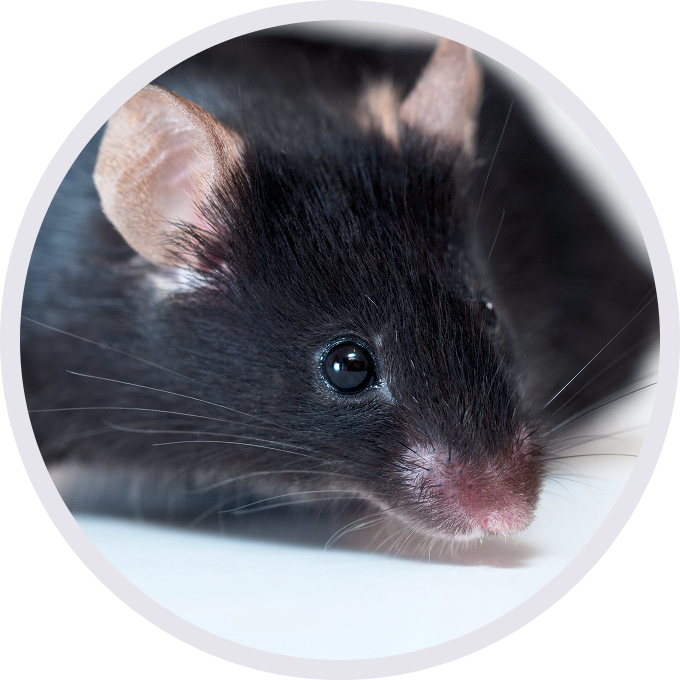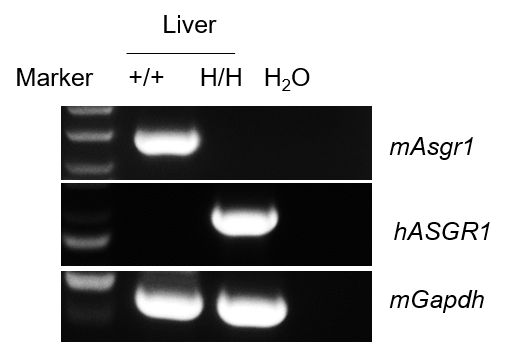
C57BL/6JNifdc-Asgr1tm4(ASGR1)Bcgen /Bcgen • 113491
Background: ASGR1 is a liver receptor that clears desialylated proteins from blood, and its inhibition reduces cardiovascular risk by promoting cholesterol removal and lowering lipid synthesis.
Gene targeting strategy: The exons 1-9 of mouse Asgr1 gene that encode signal peptide, extracellular domain, transmembrane domain, cytoplasmic region and 3’UTR were replaced by human counterparts in B-hASGR1 mice. The promoter and 5’UTR region of the mouse gene were replaced by human counterparts.
Validation:
Application: This product is used for pharmacodynamics and safety evaluation of cardiovascular diseases.
Gene targeting strategy for B-hASGR1 mice. The exons 1-9 of mouse Asgr1 gene that encode signal peptide, extracellular domain, transmembrane domain, cytoplasmic region and 3’UTR were replaced by human counterparts in B-hASGR1 mice. The promoter and 5’UTR region of the mouse gene were replaced by human counterparts. The human ASGR1 expression is driven by the endogenous human ASGR1 promoter, while mouse Asgr1 gene transcription and translation will be disrupted.

Species-specific analysis of ASGR1 gene expression in wild-type C57BL/6JNifdc mice and homozygous humanized B-hASGR1 mice by RT-PCR. Liver was collected from wild-type C57BL/6JNifdc mice (+/+) and homozygous B-hASGR1 mice (H/H). Mouse Asgr1 mRNA was detectable only in wild-type C57BL/6JNifdc mice. Human ASGR1 mRNA was detectable only in homozygous B-hASGR1 mice, but not in wild-type C57BL/6JNifdc mice.

Immunohistochemical (IHC) analysis of ASGR1 protein expression in C57BL/6JNifdc wild-type (WT) mice and B-hASGR1 mice. The heart, liver, spleen, lung, and stomach were collected from C57BL/6JNifdc (+/+) and homozygous B-hASGR1 mice (H/H) (female, 6-week-old), and analyzed by IHC with anti-ASGR1 antibody (ab254261). Human ASGR1 was only detectable in homozygous B-hASGR1 mice. The arrow indicates tissue cells with positive ASGR1 staining (brown). Scale bar = 50 µm.